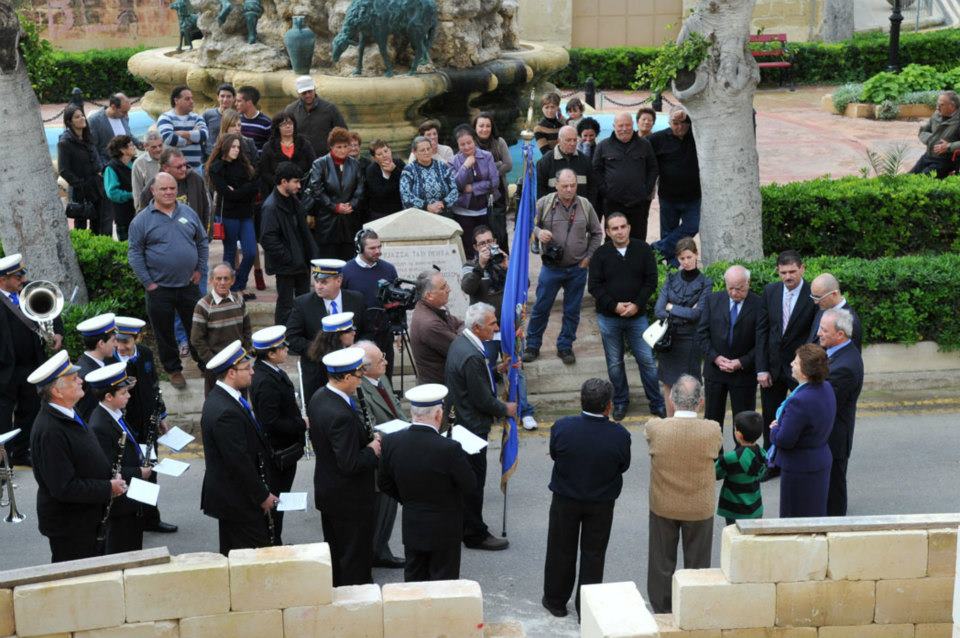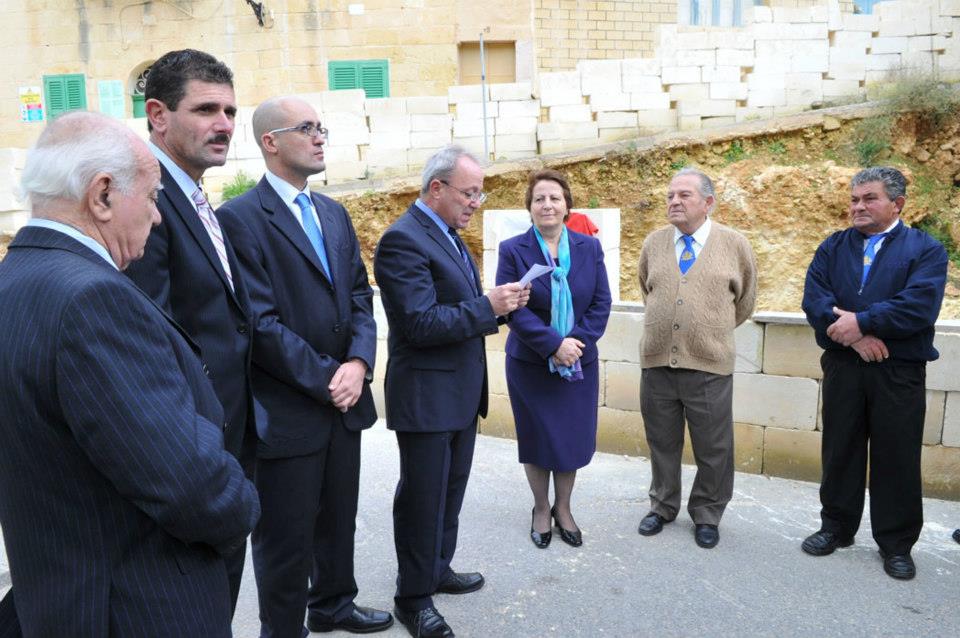
News and Events
Press Releases, Notices and Events
First stone laid at Ghajn tal-Hasselin
The Hon. Giovanna Debono, Minister for Gozo laid the first stone of the ‘Ghajn tal-Ħasselin’ project at the Apparition Square which will this see historic arcade being rebuilt by the Ghajnsielem Local Council with the assistance from the Ministry of Gozo. The ceremony started with a short band march by St Joseph Band from the main square. Mayor Francis Cauchi then made a short speech followed by another speech by the Gozo Minister. After the laying of the foundation stone, Fr Joe Cardona blessed the site.
The original arcade was built by Grandmaster Ramon Perellos in 1710 and was dismantled in the year 1953.

Under the strict supervision of an an archaeologist from the Superintendence of Cultural Heritage, excavations works started earlier this year but works had to stop due to the discovery of parts of the original walls including the back and side wall and part of the floor. These were still intact in their original state. An opening leading to a World War II shelter was also found on the same site. Construction works is now expected to continue without any further delays.
It was in this square that ‘Għajn Salem’, the spring that gave its name to the village used to flow. And it was near this spring that an arcade and six stone washing basins were built by Grand Master Raymond Perellos for the increasing population of Ghajnsielem started to gather and form a community as we know today. For over two centuries, from dawn onwards the area around the spring was throngs with chattering woman who congregated there in the mornings washing the laundry in the troughs while the man lazing off their afternoon under the canopy of the mulberry trees. Rare where the occasions where the spring remained idle. But to maintain hygiene in such a place was a problem. Less and less care was taken to the washing area and in the latter years of its existent, the arcade was left in a state of reckless abandon, the whole place stinking with filth until its removal in the early 1950′s to make way for a new square.

